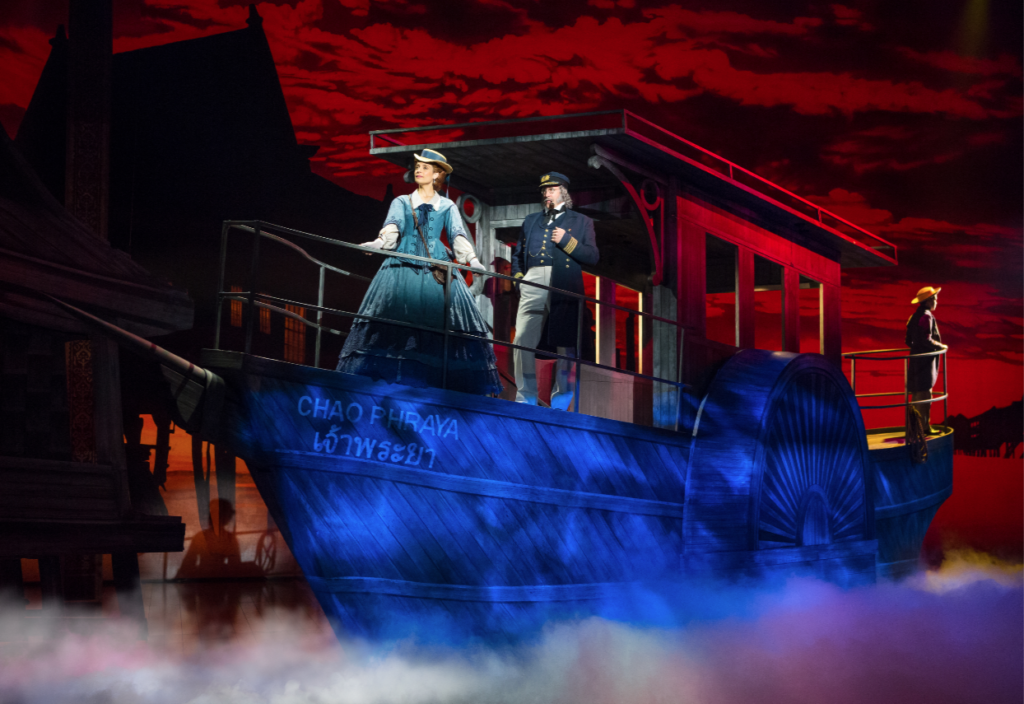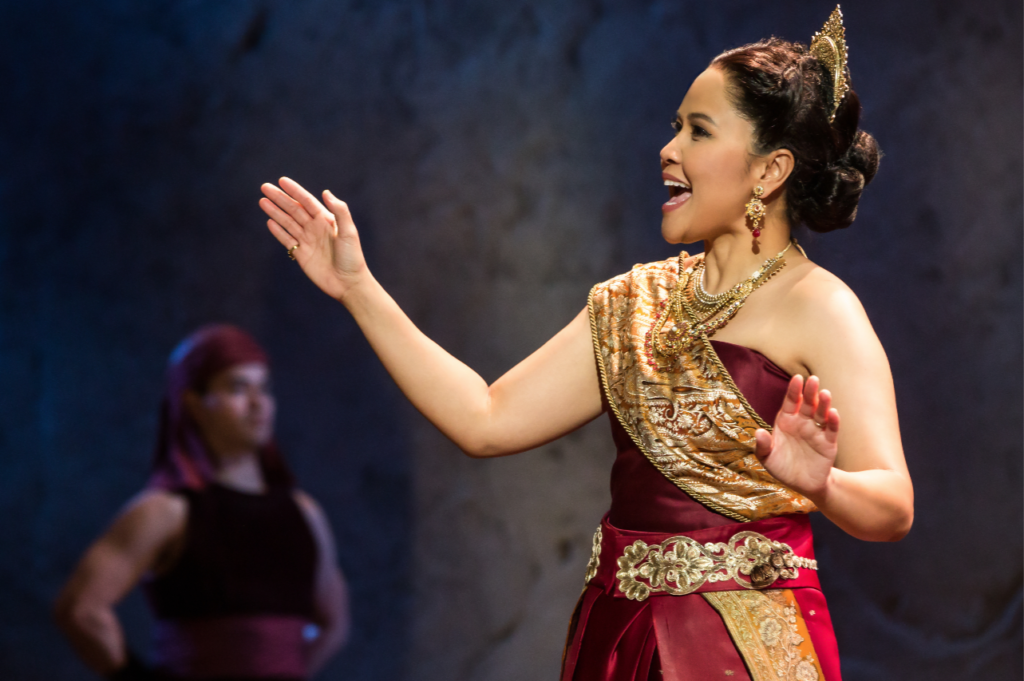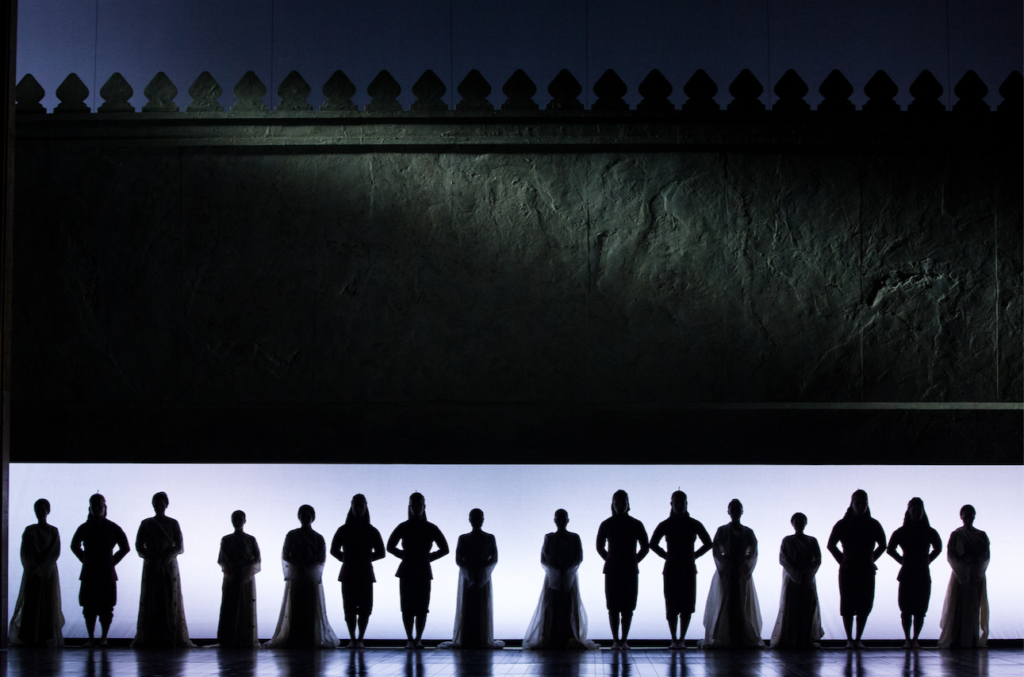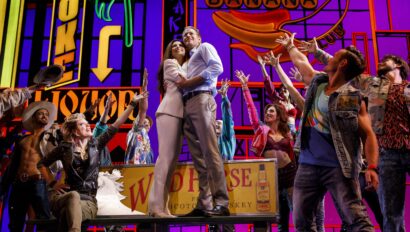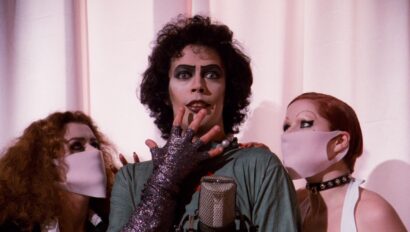A Modern Twist: An Interview with the Creative Team of “The King and I”
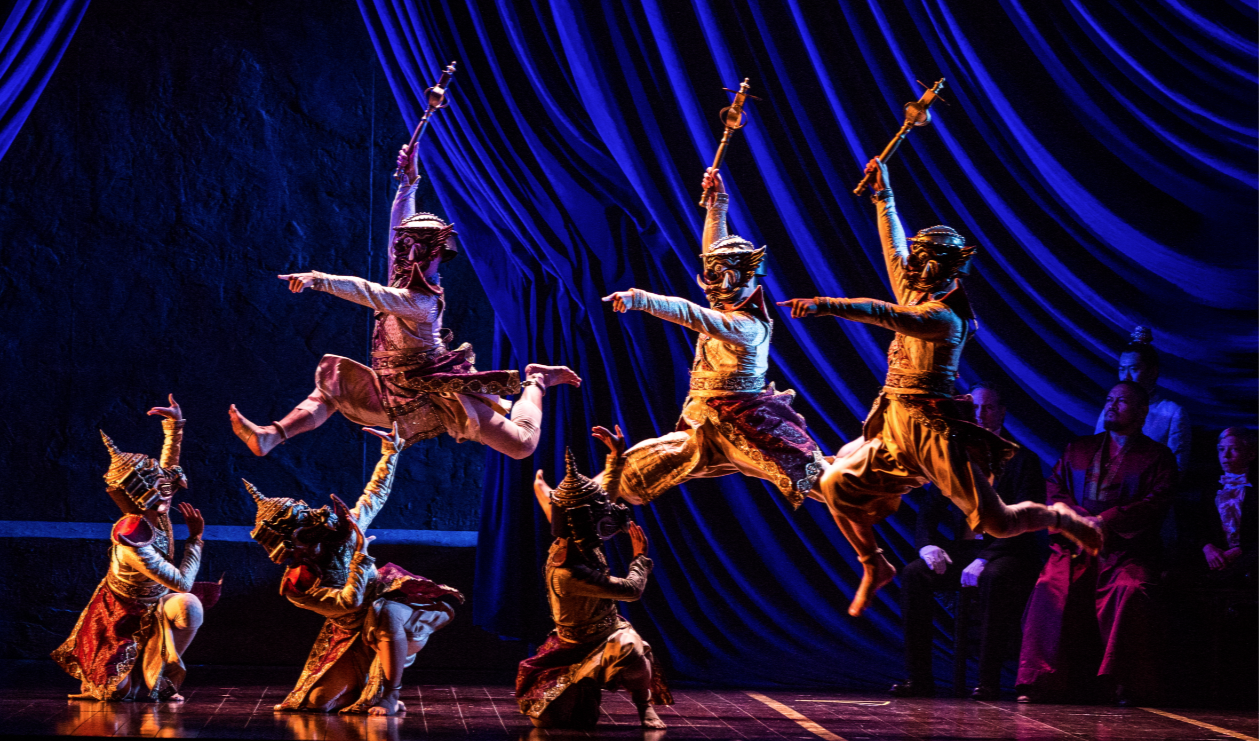
Bartlett Sher (Director): Because we had done a production of “South Pacific,” which went pretty well, André Bishop, our fearless leader at Lincoln Center Theater, had been talking about doing “The King and I.”
The initial phases, during which we talk about the very broad ideas, began while the three of us were doing Guonod’s “Faust” in Baden-Baden in Germany. Over several weeks we spent a lot of time working daily on that show and in the evening enjoying a lot of time together and discussing this production.
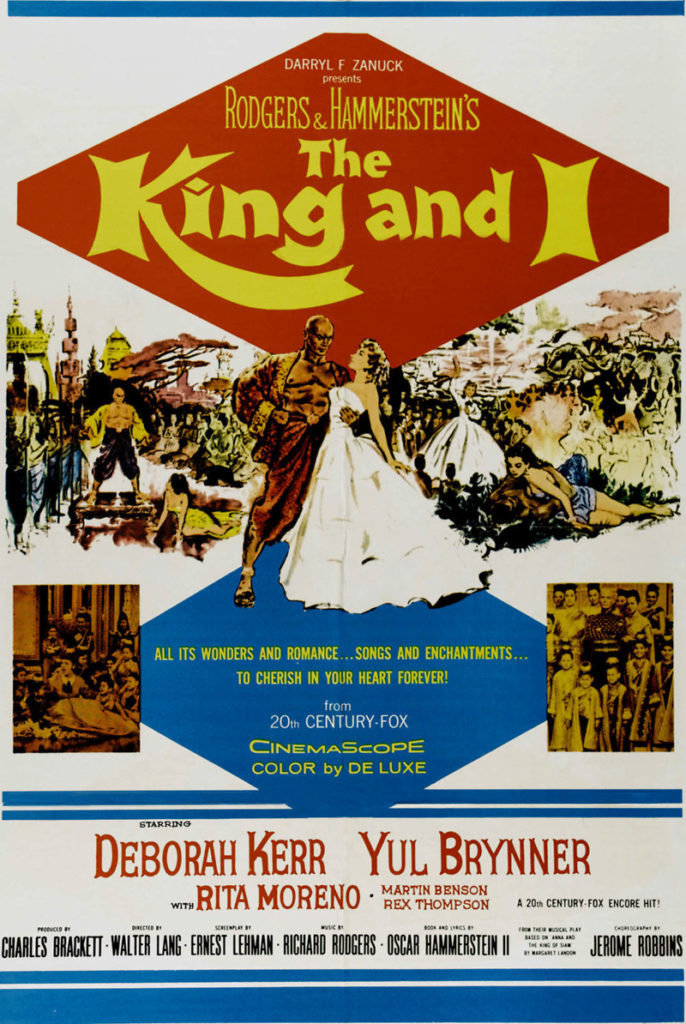
Cathy Zuber (Costume Designer): I’ve seen the movies in the past, but I don’t like to see any reference material until I’m finished with the design. I find it gets in the way. I like to know that my responses are truly from myself and not influenced. Once the design is finished, I look at the films.
Michael Yeargan (Set Designer): Well, I grew up with the movie, and as a kid I always wondered why this guy was running around in his pajamas all the time. So, as an adult, it has been fascinating for me to read about King Mongkut and Anna Leonowens, who is such an interesting character, and whom I knew so little about. It was wonderful to do that kind of research rather than just looking at sketches, pictures and other visual materials.
AN OLD WORLD AND A MODERN CULTURE
Everyone who creates a work of art based on a real life has to pick and choose what aspect of the core story he or she wants to use.
BS: Yes, there are two aspects to this. One is the purely historical aspect of Thailand in the mid-nineteenth century, and Anna Leonowens’s life; the other is the interpretative aspect of what Richard Rodgers and Oscar Hammerstein did with the story in the early 1950s and how the story they wrote has come to be reinterpreted. So you stand inside a couple of corridors of interpretation. This becomes this kind of highly hermeneutic exercise, where you’re really trying to plumb through all these different layers of how the thing is perceived. From my point of view, setting parameters for the design really had to do with how to represent the key questions in the piece that were most resonant at the time it was written in the 1950s and what questions are most resonant now.
So my entrance point came from the journalist Nicholas Kristof, who writes a lot about the problem of transitioning from traditional to contemporary modern culture in the Islamic world and developing countries. This transition to modernity is exactly what Rodgers and Hammerstein were addressing in the original piece, and it is what resonates most fully today.
Kristof would say that the most dangerous thing in the developing world now is the education of women and giving a young woman a book. So in 1862, when Anna Leonowens, whatever she represents as a Westerner, gives Harriet Beecher Stowe’s “Uncle Tom’s Cabin” to a young woman who is involuntarily given to the King as a present and is forced to join this household of many wives under the rule of the King, it is an experience of freedom that is really complex. That same problem resonated in 1950, and it resonates now and sheds light on the immediate significance of “The King and I” today. Once we understood that, we could branch out and begin to build a design. One of the problems of the past designs is that they obscure this issue through decoration.
MY: Exactly.
SIMPLIFYING THE DESIGN
BS: The opulence of past productions, and I’m not criticizing them, which are very ornate and very exotic in a way that contemporary critics would call Orientalism, is the very trap we have to avoid as we delve into the important question that Rodgers and Hammerstein were addressing, that Anna Leonowens brought up and that historians look at inside this story.
How do you do that, Michael?
MY: First, I looked at every picture I could find of the Royal Palace of Siam and was terrified, because all the other designs of “The King and I” are based on the palace’s actual architecture. It’s like an explosion in a tile factory. You’ve never seen so many tiles and colors, and all put together in the most amazing way. But when you imagine doing a play in front of it where do your eyes go? Also, in talking to Bart and in reading all this material, I felt like you couldn’t do the play in that rich world. You had to strip it down. You had to find a more iconic way to do it.
So we found these pictures of Buddhist temples with teakwood and gold that was meticulously put on by monks, and this gave it a whole different quality. It’s still ornate, but you can look at it, you can find people in it. The key was this one picture of a temple, with this big canopy over it, that just became the basic thrust of the set.
So you’re really looking at focusing on the actors, as opposed to focusing on the exotic atmosphere.
MY: Exactly.
BS: You have to be very careful. Looking at the research, there’s a kind of powerful reality to the life. It’s not quite so many decorative headdresses. The women actually had very simple hair. The kids would have worn mostly small white shirts. We learned that there is no distinguishing dress between sexes up to the age of twelve. In terms of clothing and space, the Thai have their own history, which stands in juxtaposition to the exotic imagination of the 1950s or the exotic imagination of the 1990s. In this production, we have to try to strike a sparer tone that reflects something truthful about the inner life of the people rather than just putting them in big exotic clothes for a kind of dress parade or a gallery of exoticness. So the spatial relationship to the events of the play is built to create a kind of open clarity and simplicity.
THE KING’S PALACE
MY: There’s one section of the Royal Palace that no one knows much about, and that I always thought was this big seraglio, like a harem with all these women sitting around, but it wasn’t. The King built specific mansions within this palace, like a suburb almost, these huge Western-style houses for his wives. It was a whole city.
BS: A complete city of women, with its own guards, its own judges, its own laws. It had almost five thousand people in it. All women, except for the youngest of the boys. The real goal of the entire city within the palace is to protect the royal line of the King. That’s the central issue of Tuptim and the threat of Lun Tha. I don’t think the King really cares one way or another about her. It’s not about love. It’s that in order to maintain power you have to protect the royal line. The King wasn’t necessarily the most powerful man in the kingdom. The Kralahome, the Prime Minister, was easily as powerful, as he controlled trade, but he wasn’t royal.
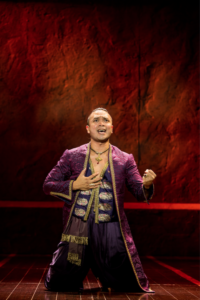
She’s open to him and his culture, and he’s open to hers.
CZ: Of course, part of the reason he wanted a woman to teach his children was that he was threatened by having a man come in and be so intimate with his wives and his children.
BS: He was also dealing with serious issues, given that Thailand was being surrounded by colonizing forces, England, France, the Dutch. He protected his culture, he supported it and he was trying to slowly pull it into modernity. Similar questions are still arising in the Middle East with regard to how women are treated, where they can go and what they can do, and protecting levels of male power.
The best example of where the Rodgers and Hammerstein stuff kind of falls in the middle of the problem here is one number called “Western People Funny,” which, in the traditional sense, is an extremely stereotyped song of the Thai, in their naïveté, trying on Western dress and talking, ha-ha-ha, about how Western people are so funny. Whereas now I think all you have to do is flip it in the same way we did with “Happy Talk” in “South Pacific.” You flip it and you suddenly look at it from the point of view of the dominant culture instead of the subordinate culture, which is the way, I’m sure, Rodgers and Hammerstein looked at it, as the superior Westerners. So if you flip it, “Western People Funny” becomes ironic. To me, that’s an interesting exploration. The same thing has to work for the clothes. How the clothes in these weird silhouettes of the antebellum hoops and big things flip to something else.
They’re barbaric.
CZ: Yes. They are quite ridiculous and impractical. And, in studying the clothing of Siam in this period, I find that it’s quite beautiful and quite practical. It’s similar to a sari in the way it wraps around the body, but it has its own unique details. They’re beautiful garments, and much more modern than what Westerners were wearing at the time.
Actually, now that you’ve mentioned it, I would say that the enormous hoopskirt from the movie is probably the iconic…
BS: Protect-your-woman outfit. It’s a demonstration of southern power in relation to maintaining white superiority over slavery.
A NEW UNDERSTANDING
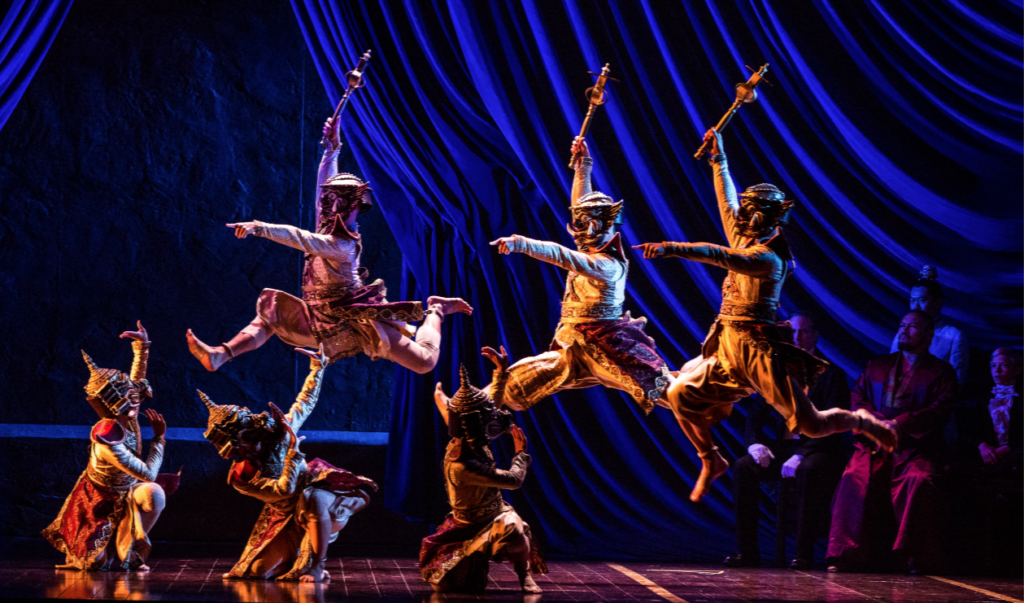
CZ: One thing that I found interesting was that the King, and some of the wives, gravitated toward some details of Western dress. There are a lot of images of the King and his son with Western-style military jackets. There are also a lot of pictures of the women who are in traditional dress but have little Victorian boots on with button sides. We decided not to do that in our production, because it’s a dramaturgical note that could be confusing. But I found that interesting in terms of their embrace of all the people who came through.
MY: The same holds for the props. In the photographs there are lots of Western props, like crystal chandeliers. It’s this crazy mixture of Western things juxtaposed with the Thai architecture and aesthetic.
BS: It’s strange, the more distance you get on the original production, the deeper you can look. It’s odd that history and time give us a chance to learn more about what they were beginning to understand in, say, 1951. So the benefit of a revival is that we can actually not only stand in awe and incredible devotion to what Rodgers and Hammerstein were able to accomplish way ahead of their time, but perhaps pull even more out of the piece than people had ever understood could be there. And, at the same time, keep it entertaining and buoyant and beautiful.
It’s interesting—you really cannot say the year 1951 too often when talking about the original production. Just think about the position of women, about what the world looked like, about people’s houses, what they wore, what the international world was like. It is so distinct, and we’re so far away from that now.
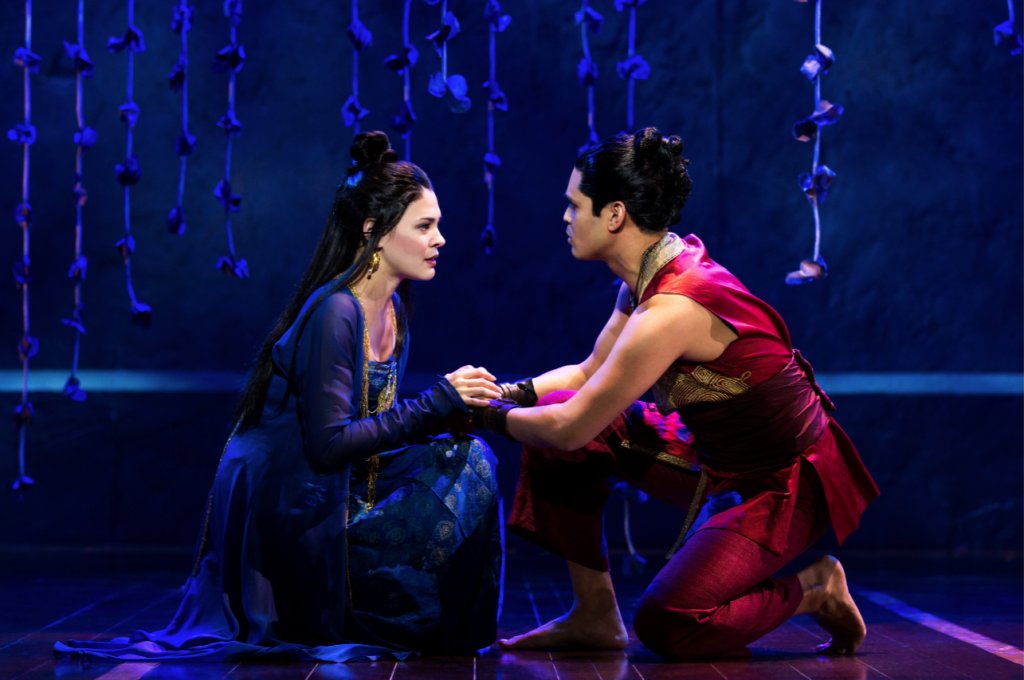
So that was a part of the evolution in the design. From the original sequence of design meetings, we went off and made stuff. Cathy and I went through a long period in the middle, after she’d done one pass in the design, of taking this information and going back and reinvestigating the color and how decorative the looks should be.
BS: In order to live up to the scale of the show’s ambition, we have to go both backward and forward in time. It’s like having one foot in the past as deeply as we can, one foot in the present, and our eyes looking out as far ahead as we can to see how it resonates.
Rodgers and Hammerstein’s “The King and I” plays Tuesday, May 15 – Sunday, May 20 at The Hanover Theatre for the Performing Arts.
Photos by Matthew Murphy and Jeremy Daniel
